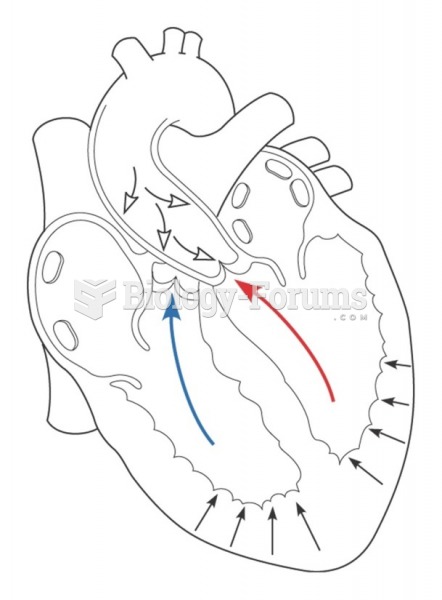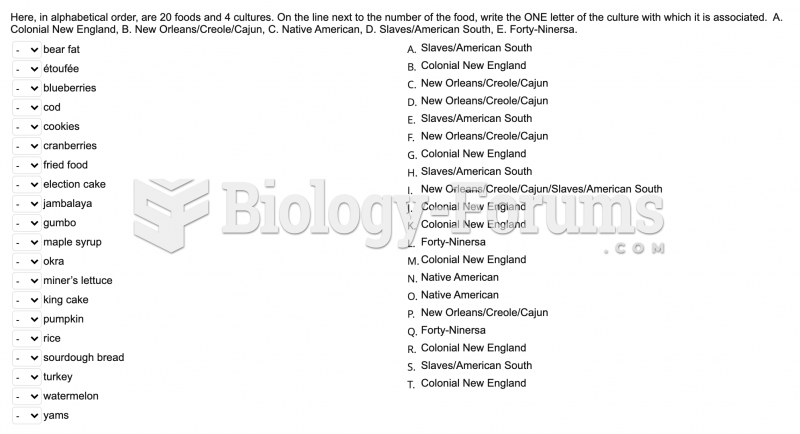|
|
|
Green tea is able to stop the scent of garlic or onion from causing bad breath.
A cataract is a clouding of the eyes' natural lens. As we age, some clouding of the lens may occur. The first sign of a cataract is usually blurry vision. Although glasses and other visual aids may at first help a person with cataracts, surgery may become inevitable. Cataract surgery is very successful in restoring vision, and it is the most frequently performed surgery in the United States.
Famous people who died from poisoning or drug overdose include, Adolf Hitler, Socrates, Juan Ponce de Leon, Marilyn Monroe, Judy Garland, and John Belushi.
The ratio of hydrogen atoms to oxygen in water (H2O) is 2:1.
People about to have surgery must tell their health care providers about all supplements they take.







